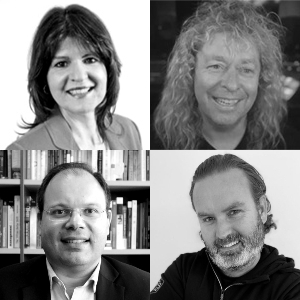Everyone’s reality is slightly different. We all experience the world around us in different ways. Our world is sensed as numbers and electrical impulses that our brains then turn into something meaningful. At Extrasensory, everyone was challenged to make sense of the world of the senses and find the limits to their own. There were many incredible sights, tastes and sensations to behold while exploring the magnificent spaces of the Parliament of Victoria!
The current treatment model for addictive behaviours involves treating people based on the substance or behaviour they are dependent on; however, there are usually underlying psychological reasons for their addictions that might not go away (i.e. treating someone for alcoholism who drinks due to an earlier trauma doesn’t remove the injury of the underlying trauma). The solution is to ‘focus on underlying drivers, not surface symptoms of problematic behaviours’. Rather than assessing and focusing on a diagnostic “what”, Professor Yücel and BrainPark are focusing on the “why”.
RSV President David Zerman emphasises the Medal is not just about discovery and innovation, but also about fostering and supporting a thriving research community and workforce to achieve collective impact. “Some of this is demonstrated through a scholar’s personal output of journal articles and the related citations, or through patents and commercialisation, but it is also the research ecosystem that a leader supports through mentorship, collaboration and public engagement. We look very favourably on research leaders who bring effective teams together, and who actively promote younger scientists in particular, either through direct supervision, co-authorship of major papers, or simply creating opportunities for meaningful, purposeful work in an intensely competitive job market.”
People often say that we are not born racist, however the truth is actually more complicated: new-born infants exhibit no preference for faces of various ethnic groups, however from the age of 3 months, infants begin to take longer to scan faces – indicating that they are thinking more about appearances – and exhibit a preference for faces of their parents’ (and own) ethnic group(s). These findings imply that while we may not be born racist, our perceptions of ethnic differences are learned during early development as a result of exposure to own- versus other-race faces. In this reflective piece, Catriona Nguyen-Robertson considers the neuroscience of racism as presented to the Society by Dr Larry Sherman, drawing parallels to her own experience as an Australian with a mixed heritage of Vietnamese and Scottish parentage.
Recently, there has been worldwide “hype” around brain interfaces and the seemingly endless possibilities that they provide. Despite bold predictions from several technology companies about the future of neural interfaces (e.g. Elon Musk’s whole brain interface that will allow the brain to connect to an information network), the science of brain augmentation is still in its early days. There is a large gap between what is talked about amongst the hype and what is actually feasible in the near future. Professor Arthur Lowery gave us a reality check of what applications are possible for brain interfaces; electrodes can be placed to stimulate the occipital lobe for sight, the motor cortex for the control of prosthetics, or the speech centre for artificial speech.









